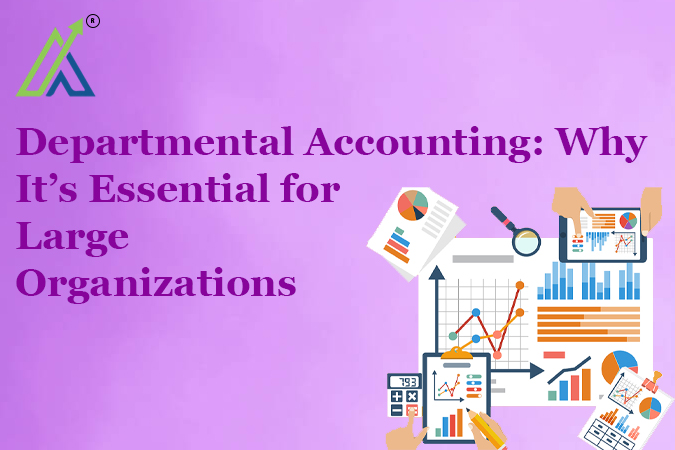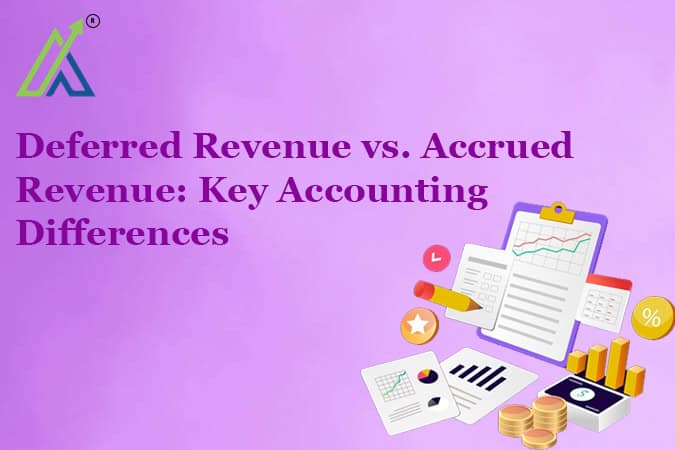In today’s competitive business landscape, large organizations with diverse operations face the challenge of managing multiple departments efficiently. This is where Departmental Accounting emerges as a game-changer. By breaking down financial data into departmental segments, businesses gain granular insights into performance, costs, and profitability. For organizations with sprawling operations—such as manufacturing units, retail chains, or IT services firms—this approach isn’t just beneficial; it’s indispensable.
What is Departmental Accounting?
In the departmental accounting system, each and every department possesses its own book of accounts. Any business generates and maintains different accounts for multiple sections inside the organization. This will assist in figuring out the performance of each division reasonably.
For generating financial statements of the company, separate books of accounts are consolidated. The aim is to monitor all costs and income in a separate book of accounts. Because of this system, it gets easier and more accurate to figure out each and every branch’s financial success. Additionally, you can evaluate which department is underperforming and figure out the ways to enhance their performance.
Companies having many operations would find this kind of accounting system most appropriate. Many products can be produced under one roof when several branches exist. Track performance and expenses using departmental accounting.
Methods of Departmental accounting
Departmental accounting offers diverse approaches for extracting the profit and loss of each department. Companies can use any method according to their department. It offers two methods for accounting purposes:
- Maintaining separate account books:
- Maintaining column-wise in the same account book:
Maintaining separate account books
This method is used to address every department of a firm as a separate entity. It handles the expenses and profit margins of each department individually. Therefore, this method demands a separate account book for each department.
This method becomes challenging because each department’s accounting is handled separately. After this, all these separate books are merged, and the profit of the firm can be calculated. It is an intricate method and costlier when compared with other available methods. Mostly big companies use this method for their firms. Also, some firms use this method where it becomes mandatory by law. For instance, insurance companies are mandated to use this method for departmental accounting.
Maintaining column-wise in the same account book:
In this method of departmental accounting, a single account book is maintained for each department. This method handles the profit and loss of each department in a column format in the central account book. This book includes a column named “total” for extracting the results. This method, however, produces a combined version of a balance sheet yet can still get the outcome of one department.
Should a company engage in more cash buy and sale, the central account book has to have a dedicated column for cash. It also has to keep every department’s cash purchase and sales record intact. There is no full book-keeping system maintained by this approach. Small businesses so find this approach simpler and more dependable for their operations.
This approach, however, creates a supplementary account book ready for combining purchase and sale of a good. The method keeps subsidiary account books with separate columns for several divisions of a company. Among the produced subsidiary account books are purchase books, sales books, purchase return books, and sales return books.
Objectives of Departmental accounting
The primary objective of each accounting method is to make every firm in profit. Each method serves as a system that delivers ease and accuracy in the accounting of the firm. Departmental accounting consists of the below objectives:
- Measurement of performance
Departmental accounting helps one to ascertain the relative performance and earnings produced by every department. These findings enable one to compare the relative financial situation of every department.
- Analyze the growth potential of different divisions
The development potential of a department in relation to others can be ascertained by comparing the accounting performance of several departments. Managers’ and employees’ commissions and incentives are sometimes based on how well their divisions do in comparison. Determining staff incentives is aided by departmental accounting.
- To rationalize capital expenditures
The management can better grasp the amount of capital used in each department with the aid of departmental accounting. The management determines the amount of capital that must be allocated to each department based on its performance. Stated differently, departmental accounting aids in creating departmental budgets as well as tracking and controlling each department’s performance.
- To determine efficiency
Departmental accounting aids in determining each department’s stock turnover ratio, which in turn aids in evaluating each department’s effectiveness independently.
- To strategize and manage
Each department’s cost and profit figures are provided via departmental accounting, which aids in improved departmental planning and management.
Advantages of Departmental Accounting
Department accounting is beneficial for the companies in several ways. These benefits depend upon the type of business on which departmental accounting is applied and also the different departments that are existing in the company. Below are some advantages that take place irrespective of the different departments: –
- With the help of a comparison between different departments, it becomes easy to estimate the future expansion prospects.
- Separate cost and profit information helps to improve control by itself. Thus, adopting departmental accounting data can help you to achieve efficient management.
- Management can get understanding of capital outlay. One of the main advantages here is that they can help any department.
- Computing the stock turnover ratio can help you ascertain efficiency. Every department does this on their own.
- Trade outcomes will help to independently evaluate the success of every department. You may do this in an effort to increase the sales of the segment generating the highest profitability.
A firm assigns the tasks among its several divisions. Every department opens their own individual accounts. They are then evaluated stand-alone to gauge its performance. This will help every part of the company to becoming more efficient.
Questions to understand your ability
Q1.) What is the main objective of departmental accounting?
a) To minimize company expenses
b) To measure the performance and profitability of each department
c) To merge all departments into one single unit
d) To increase the complexity of accounting systems
Q2.) Which method of departmental accounting requires separate books of accounts for each department?
a) Maintaining column-wise in the same account book
b) Maintaining a centralized financial report
c) Maintaining separate account books
d) Merging department accounts into one book
Q3.) What is one of the advantages of departmental accounting?
a) It simplifies performance evaluation across departments
b) It eliminates the need for financial statements
c) It avoids comparing the performance of different departments
d) It requires no financial oversight
Q4.) Which of the following methods is more likely to be used by smaller businesses?
a) Maintaining separate account books
b) Maintaining column-wise in the same account book
c) Consolidated financial accounting
d) Merging departments into one accounting system
Q5.) How does departmental accounting help with capital expenditures?
a) It reduces capital expenditure across the company
b) It enables management to better understand and allocate capital to each department based on performance
c) It eliminates the need for capital expenditure
d) It helps avoid any capital expenditure
Conclusion
In conclusion, departmental accounting is a crucial system that enables businesses to manage and evaluate the performance, profitability, and efficiency of each department independently. By maintaining separate accounts or using a column-wise method, it provides valuable insights into cost management, capital allocation, and growth potential. This approach improves decision-making, enhances control, and ultimately contributes to a company’s overall success and expansion. It is particularly beneficial for companies with multiple divisions and operations.
FAQ's
Departmental accounting is a system where each department in a business maintains its own book of accounts to track costs and income, helping assess the performance of each department.
The two methods are:
- Maintaining separate account books for each department
- Maintaining a column-wise format in a single account book.
This method treats each department as a separate entity, enabling detailed tracking of profits and expenses for each department, but it is more complex and expensive.
It allows tracking of each department’s profit and loss in a single book with separate columns, making it easier and less costly for small businesses to manage.
It helps measure the performance of each department, compare financial outcomes, and assess their relative efficiency.
It enables management to better understand the capital required for each department and allocate resources accordingly based on performance.
It helps determine each department’s stock turnover ratio, which aids in evaluating its efficiency and effectiveness.
By comparing the performance of different departments, it helps estimate future expansion prospects and strategize for growth.





